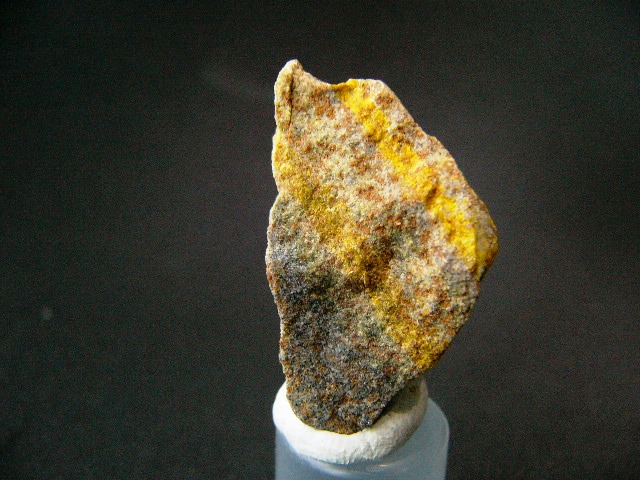 The Mineral
BECQUERELITE
The Mineral
BECQUERELITE
- Chemical Formula: Ca(UO2)6O4(OH)6-8(H2O), Hydrated Calcium Uranyl Oxide Hydroxide
- Class: Oxides and Hydroxides
- Uses: as mineral specimens
Specimens
Becquerelite forms beautiful lustrous yellow transparent crystals, generally too small to be appreciated except under a microscope. Becquerelite forms in oxidation zones of sedimentary uranium deposits, and is occasionally found in pegmatites. It is often found in association with uraninite, as it is one of the weathering products of that mineral.
Becquerelite is part of the Comperignacite - Billietite series, which vary primarily by a substitution of calcium with potassium (in comperignacite) or with barium (in billietite).
Remember, this is a radioactive mineral and should be stored away from other minerals that are affected by radioactivity and human exposure should definitely be limited. However, note that radioactivity is relative: uranium is not very radioactive compared to most unstable isotopes. This is easy to understand, as the uranium has been slowly and steadily decaying since the Earth was formed approximately 4.5 billion years ago. Since the half-life of the most common uranium isotope, U-238, is 4.47 billion years, only half of the Earth's U-238 remains. The isotope used in nuclear reactors and bombs, U-235, has a half-life of 704 million years, so only 1.2% of the Earth's original supply remains. A very highly radioactive substance decays much more rapidly, and there is none left on Earth except through the continuing decay of elements such as uranium. For example, radon has a half-life of 3.8 days. A gram of pure radon therefore decays 450 billion times faster than a gram of U-238 - it is 450 billion times as radioactive.
PHYSICAL CHARACTERISTICS:
^- Color is various shades of yellow, brownish-yellow, or orange.
- Luster is adamantine to resinous (it has also been reported as greasy).
- Transparency crystals are transparent to translucent.
- Crystal System is orthorhombic-pyramidal; 2mm
- Crystal Habit is typically tabular with a pseudohexagonal cross section; also prismatic, sometimes with striations along the sides. Also found as crusts and fine-grained aggregates.
- Cleavage is perfect.
- Fracture is unknown.
- Hardness is 2.5
- Specific Gravity is 5.1 (heavy)
- Streak is yellow.
- Associated Minerals include uraninite and related weathering products.
- Other Characteristics: radioactive; fluoresces green under long-wave ultraviolet light
- Notable Occurrences include Zaire (Congo), France, Germany, and the states of Arizona, Colorado, and Utah in the USA.
- Best Field Indicators are fluorescence, crystal form, luster, color, radioactivity and streak.



